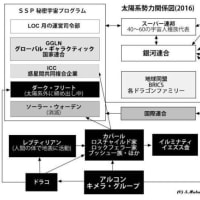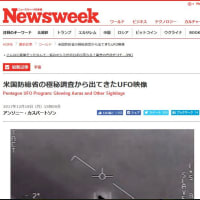Lost Pyramid City of Mu? According to Nat Geo...
We have covered several anomalies of recent, which some fields of study, would rather be kept silent. Often attempting to dismiss such objects as a fraud, or if structural, as a natural formation.
And our next topic is no exception, just off the coast of Yonaguni amongst the Ryukyu Islands of japan, is a place once passionately argued as a natural formation by countless academic scholars. Now all but surrendered to the truth.
And once you are introduced to the sheer enormity of this city, you will begin to realise why some were so keen for the world to remain ignorant of this place.
For once one becomes aware of the ancient pyramids, possibly many hundreds of thousands of years old, even dwarfing that of great pyramids which rest within the giza plateau, you begin to wonder why more is not heard regarding this place.
Only discovered as recently as 1986, a diver near the island of Jima, off the southern tip of Japan, came across some very strange structures about 25 metres below sea level.
They appeared to him to be stepped structures with terraces and ramps, and thankfully he reported his find to local geologists.
One of the largest pyramid structures found here is over 600 feet wide and 900 feet tall, comparatively, the tallest of Egypt’s being a mere 450 feet, making these submerged and supressed pyramids, almost twice as large.
They all appear to be made with five separate levels of stone blocks, and what appears to be a road surrounding the structures.
Due to the public debunking efforts experienced, the majority of the world’s population have subsequently overlooked this place, this, regardless of the exploratory dives made upon the buildings...
Dives resulting in the discovery of Tool marks and carvings made upon the stone, archeologically indicating that they were indeed constructed rather than being natural stone structures.
The evidence has clearly been compelling, meaning honest professionals, including Teruaki Ishii, professor of geology at Tokyo University, have determined that the cities submergence occurred at the end of the last ice age – which was around ten thousand years ago, meaning these ruins predate this event by some considerable time.
If this is accepted to be the case however, billions of history books would have to be reprinted, taking into account an advanced Eastern culture, among many others.
During extensive research projects, several intriguing artefacts have been retrieved from around the city.
Strange stones which display as yet, unknown petroglyphs, along with several strange stone tools.
Additionally, an enormous stone monolith, adorned with what many have suspected was a human face, has been discovered at the foot of the largest pyramid.
Was this what the original sphinx looked like upon earth?
After mounting evidence in favour of the enormous formations being an extremely ancient pyramid complex, it seems academia eventually buckled to the data.
National geographic running a story confirming that the city does indeed exist, and conveniently presenting an explanation complete with a scenario involving a candidate civilization.
One must wonder, why was this quote “likely proposition” now put forward?
Why was this so preposterous before being forced to concede in regard to the ancient cities artificial origins.
Stating quote, “some experts believe that the structures could be all that's left of Mu, a fabled Pacific civilization rumoured to have vanished beneath the waves.”
Although they forget to mention that this specific land mass has remained at the same level since before the last ice age.
Just who were these ancient people?
What amazing secrets are they still awaiting to tell us,,,
We will, of course, keep you posted.
http://news.nationalgeographic.com/ne...
最新の画像[もっと見る]
-
 ようこそ ふるやの森へ
5年前
ようこそ ふるやの森へ
5年前
-
 謹賀新地球 2018(Happy New Earth 2018)
6年前
謹賀新地球 2018(Happy New Earth 2018)
6年前
-
 イベントへ向かうカウントダウン
6年前
イベントへ向かうカウントダウン
6年前
-
 GFLJ12/23/2017:欧米の主流メディアが一斉にディスクロージャーを開始した
6年前
GFLJ12/23/2017:欧米の主流メディアが一斉にディスクロージャーを開始した
6年前
-
 これからの地球着陸に備えてー銀河連邦の任務と組織
6年前
これからの地球着陸に備えてー銀河連邦の任務と組織
6年前
-
 これからの地球着陸に備えてー銀河連邦の任務と組織
6年前
これからの地球着陸に備えてー銀河連邦の任務と組織
6年前
-
 大量逮捕:永田町の懲りない面々に神の裁きが下りる時
6年前
大量逮捕:永田町の懲りない面々に神の裁きが下りる時
6年前
-
 GFLJ12/20,2017:人類史的転換期の地球に降り注ぐ祝福の光
6年前
GFLJ12/20,2017:人類史的転換期の地球に降り注ぐ祝福の光
6年前
-
 GFLJ12/20,2017:人類史的転換期の地球に降り注ぐ祝福の光
6年前
GFLJ12/20,2017:人類史的転換期の地球に降り注ぐ祝福の光
6年前
-
 GFLJ12/20,2017:人類史的転換期の地球に降り注ぐ祝福の光
6年前
GFLJ12/20,2017:人類史的転換期の地球に降り注ぐ祝福の光
6年前









